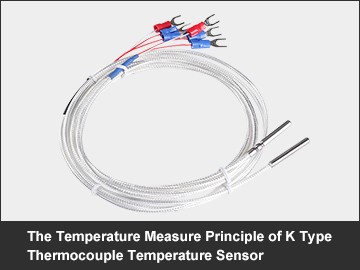The Temperature Measure Principle of K Type Thermocouple Temperature Sensor
Most people here are interested in the temperature measure principle of the K type thermocouple temperature sensor. In fact, they are not simply interested in this topic, but by understanding it's temperature measurement principle, can expand the knowledge of thermocouple, thus facilitating the thermocouple temperature sensor problem.
The measurement principle of the K type thermocouple temperature sensor is not as complicated as you might think. Theoretically, if there is a temperature difference between the hot and cold ends of the thermocouple, then the thermoelectric potential will be generated in the thermocouple circuit. This physical phenomenon is called "thermoelectric phenomenon" (i.e. thermoelectric effect). The potential generated in the thermocouple circuit consists of two parts: the thermoelectric potential and the contact potential. The contact potential is a kind of thermoelectric potential generated when two conductors with different electron densities contact each other. Once two different conductors come into contact with each other, they produce different electron densities. The diffusivity of the electron is also different if the two conduction medium are in direct contact with each other. This potential is related only to the temperature at which the properties of the two conductors meet; the higher the temperature, the more active the electrons in the conductor. This means that the more electrons there are in the conductor, the greater the electromotive force generated at the interface, and the greater the shock potential.
Combined with the advantages of the K type thermocouple temperature sensor and the principle of temperature measurement, we can clearly understand that although its temperature measurement range is wide, but it can not be directly used for chemical substances in the high temperature measurement.






